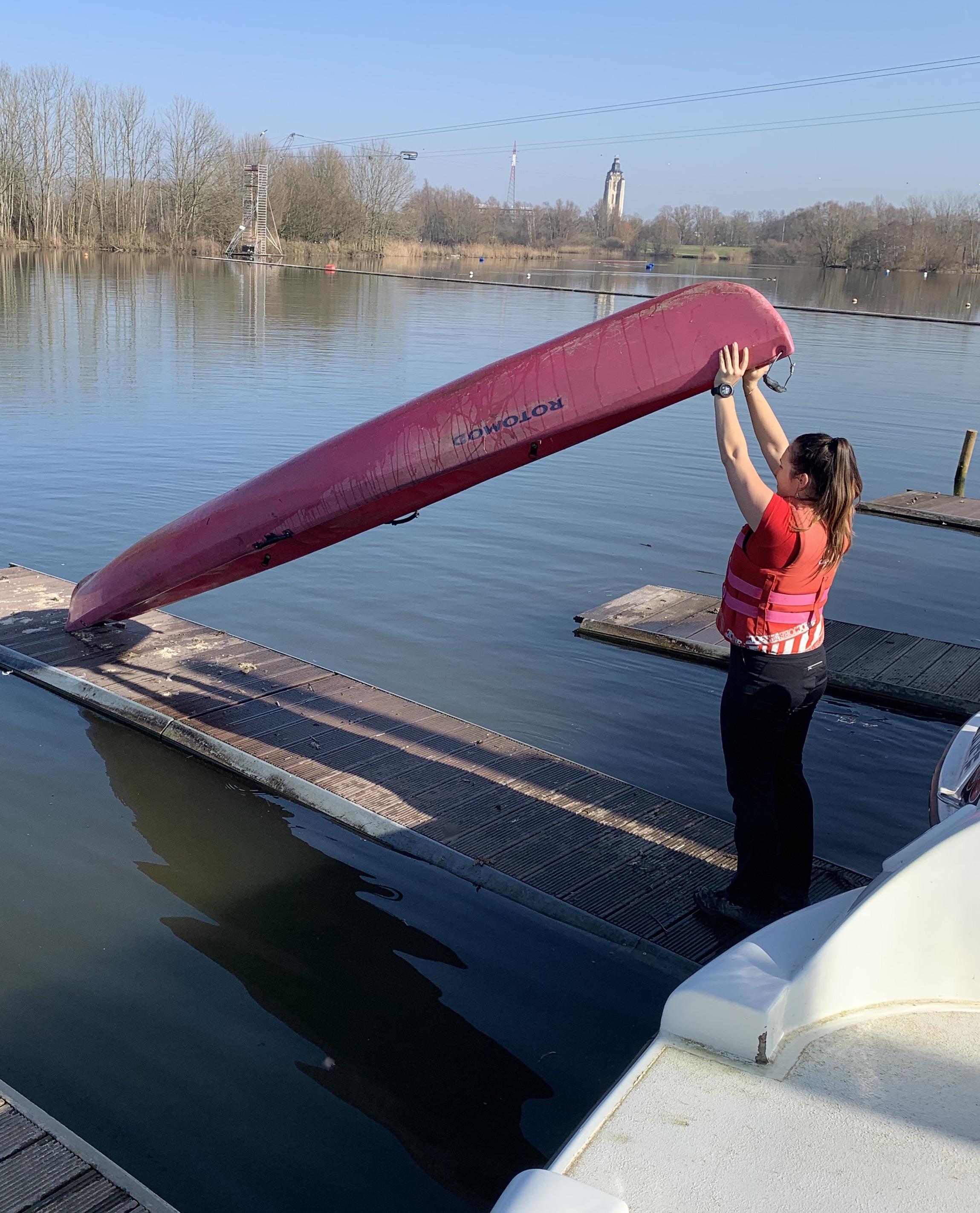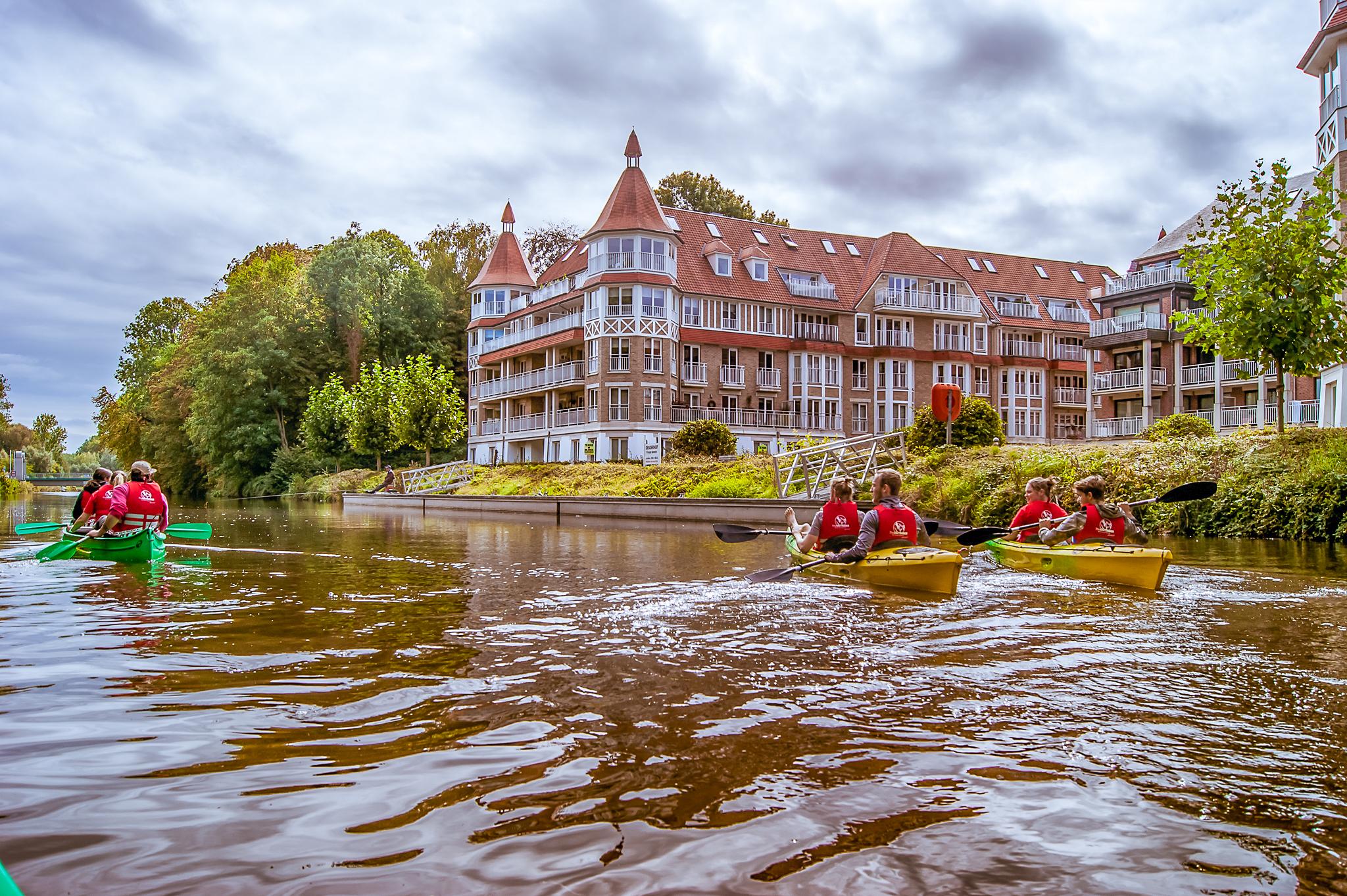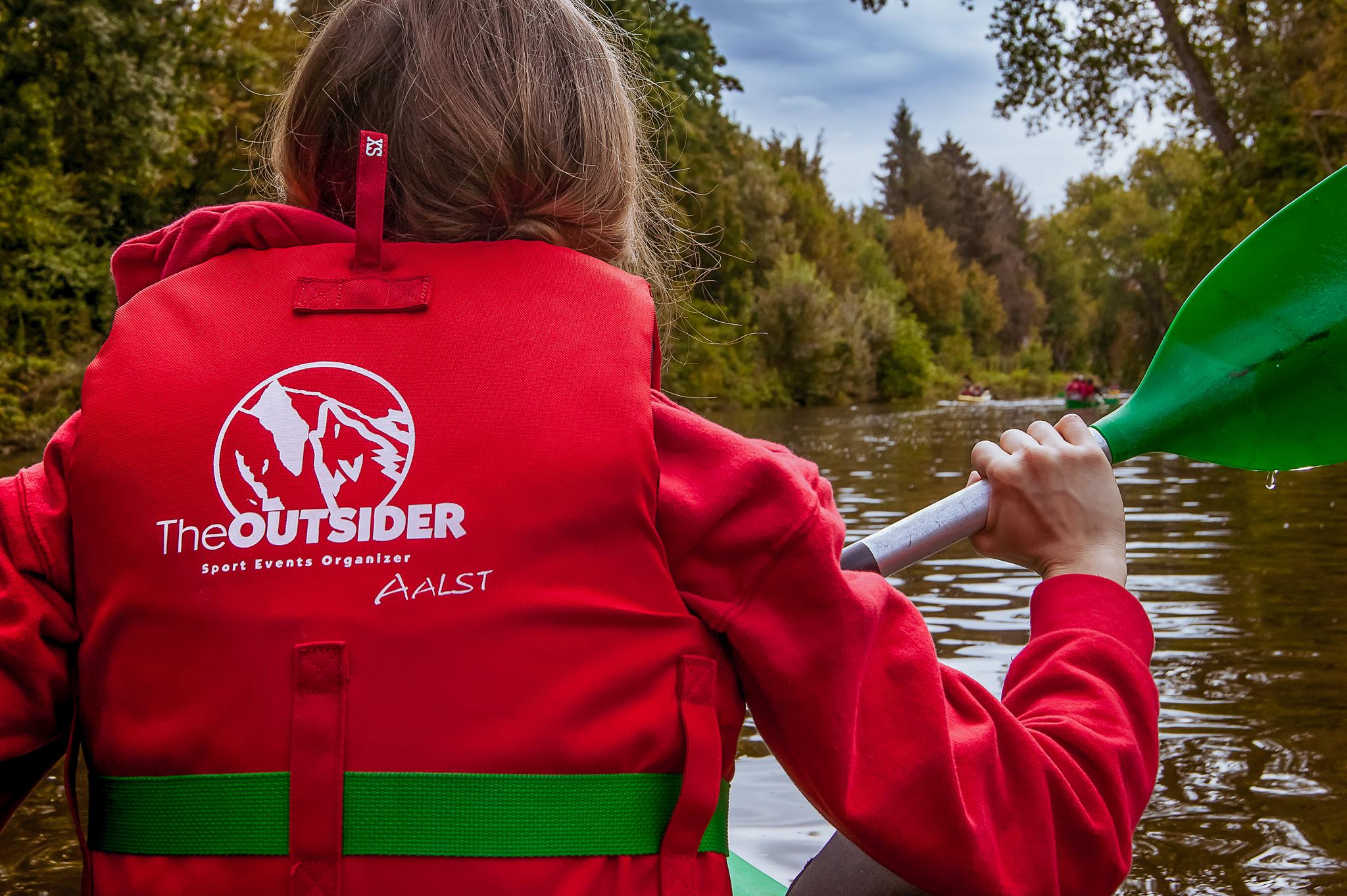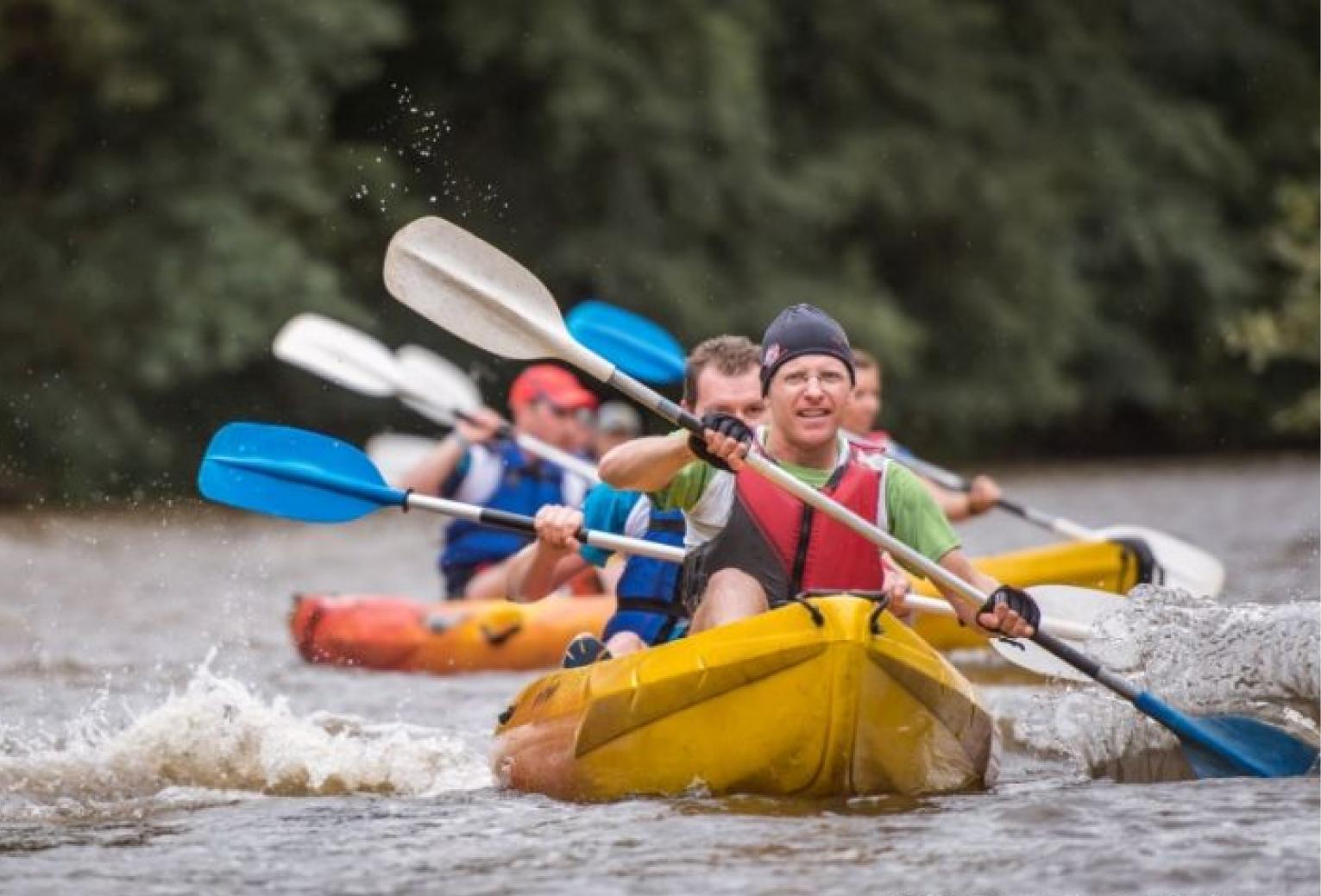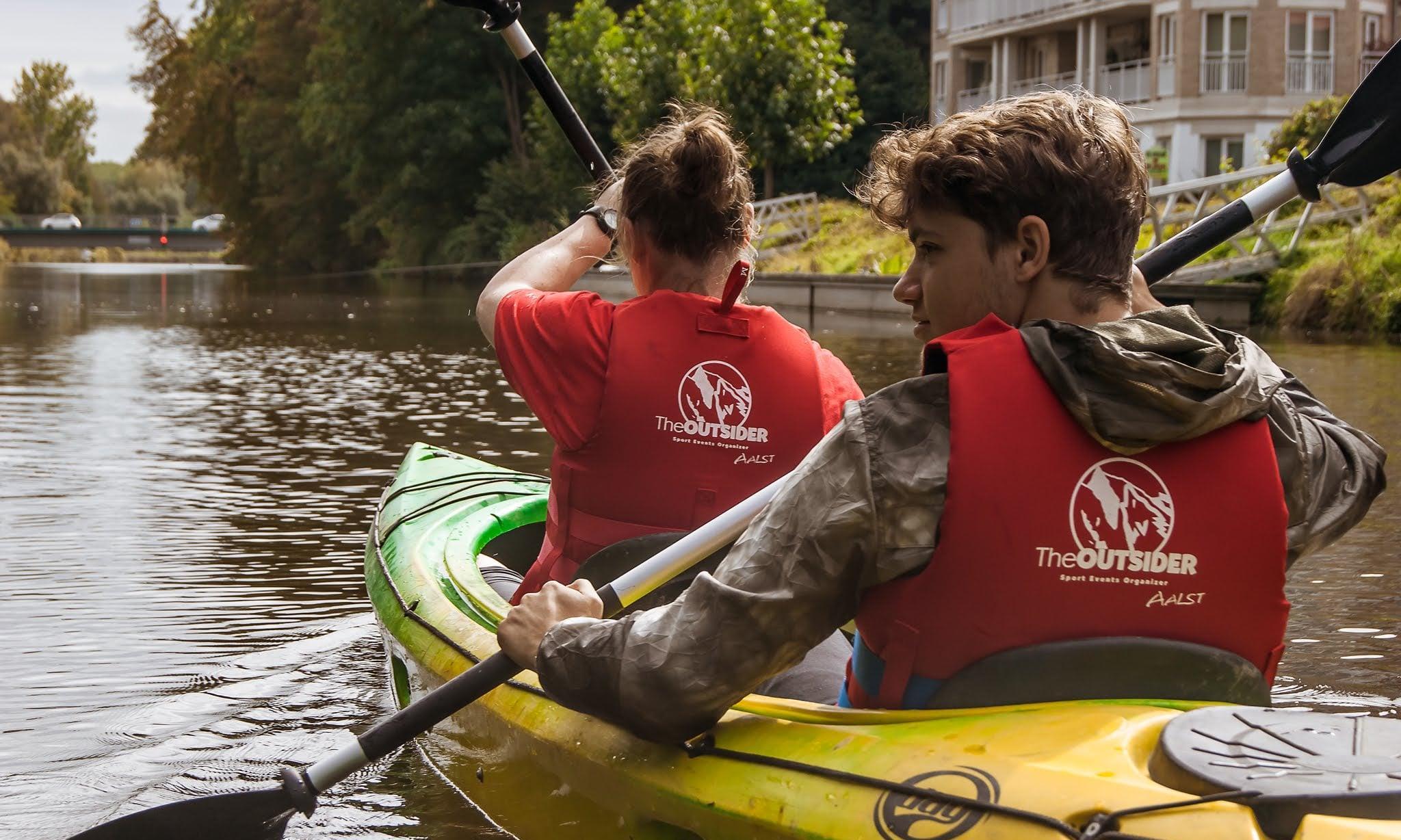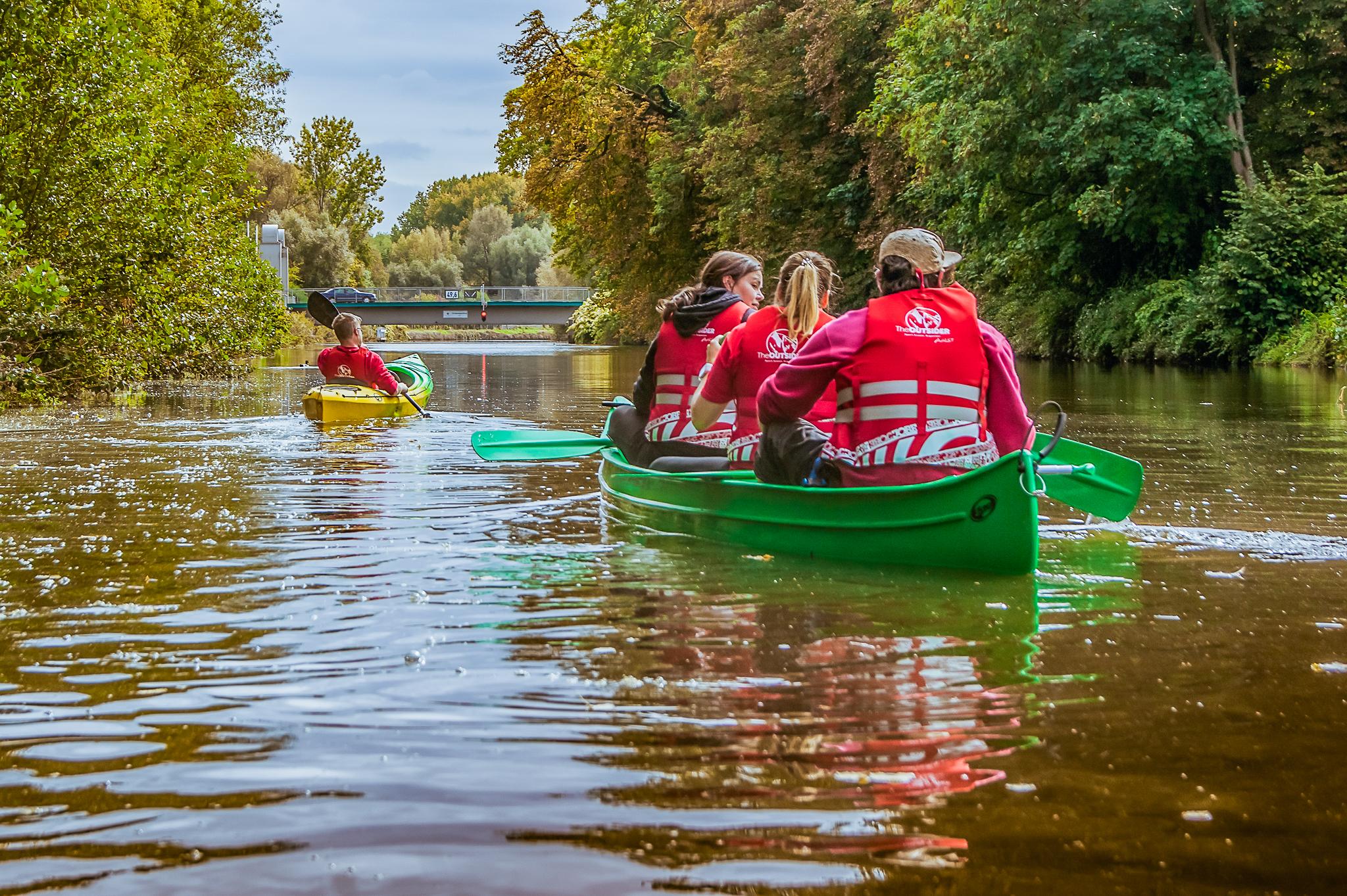
HOLDING A PADDLE
To hold your paddle correctly, first place the paddle on your head in a balanced position. Then your hands take hold of the paddle with your arms at a 90° angle and your hands at a 90° angle to the paddle. In canoeing, you hold the paddle with your closest hand on the shaft and your furthest hand on the handle. When kayaking, you hold the handle with both hands.
GETTING IN
To get into the kayak or canoe, first place the boat in the water parallel to the shore. Then place the paddle at right angles to the front of the boat and the bank. At the next stage, squat down next to the opening of the kayak/canoe and, with one hand, hold the kayak/canoe seat and the paddle and, with the other, just the paddle. This way, you can step into the boat easily. Finally, hold the paddle with two hands in the correct manner as explained above.
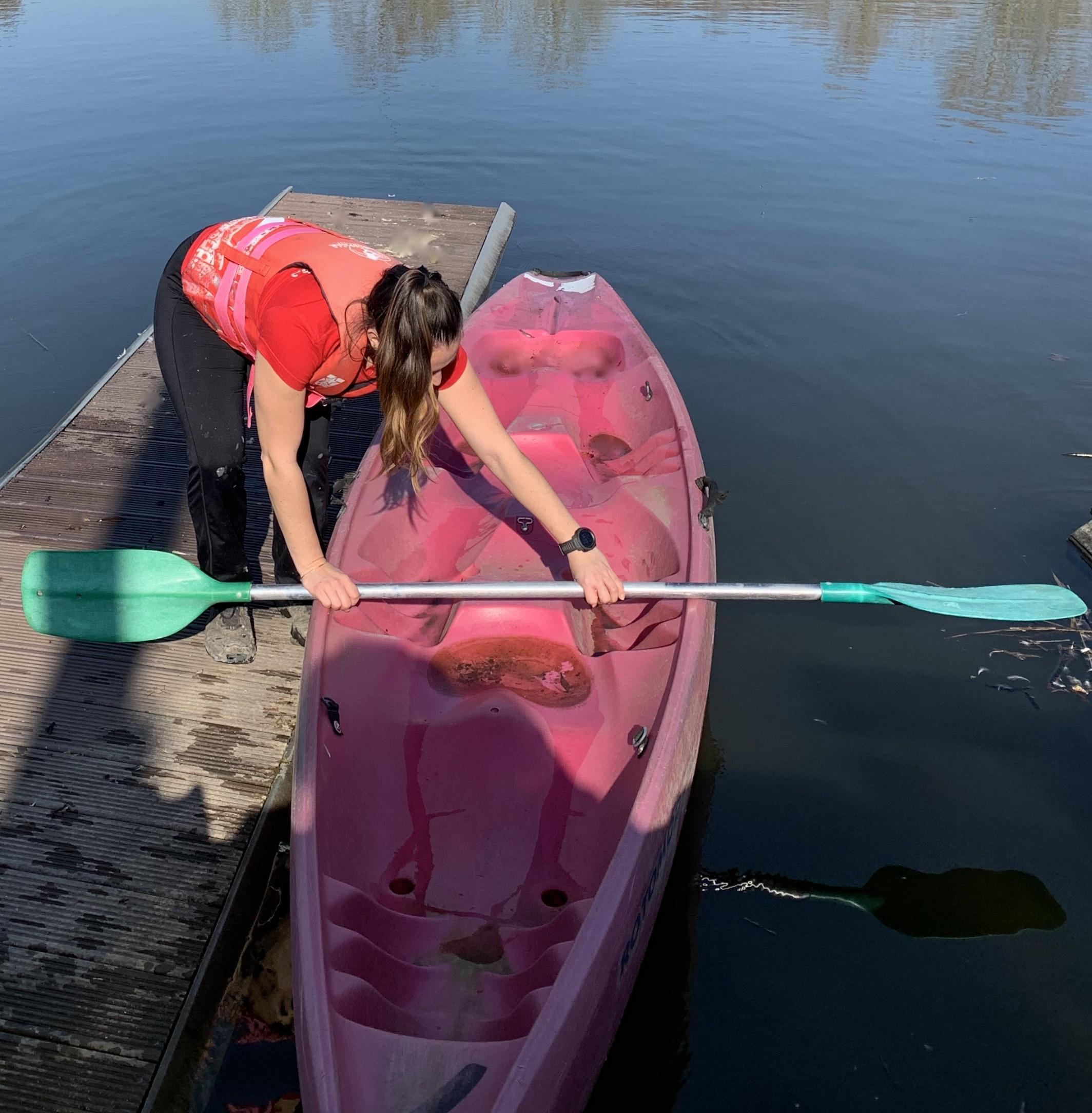
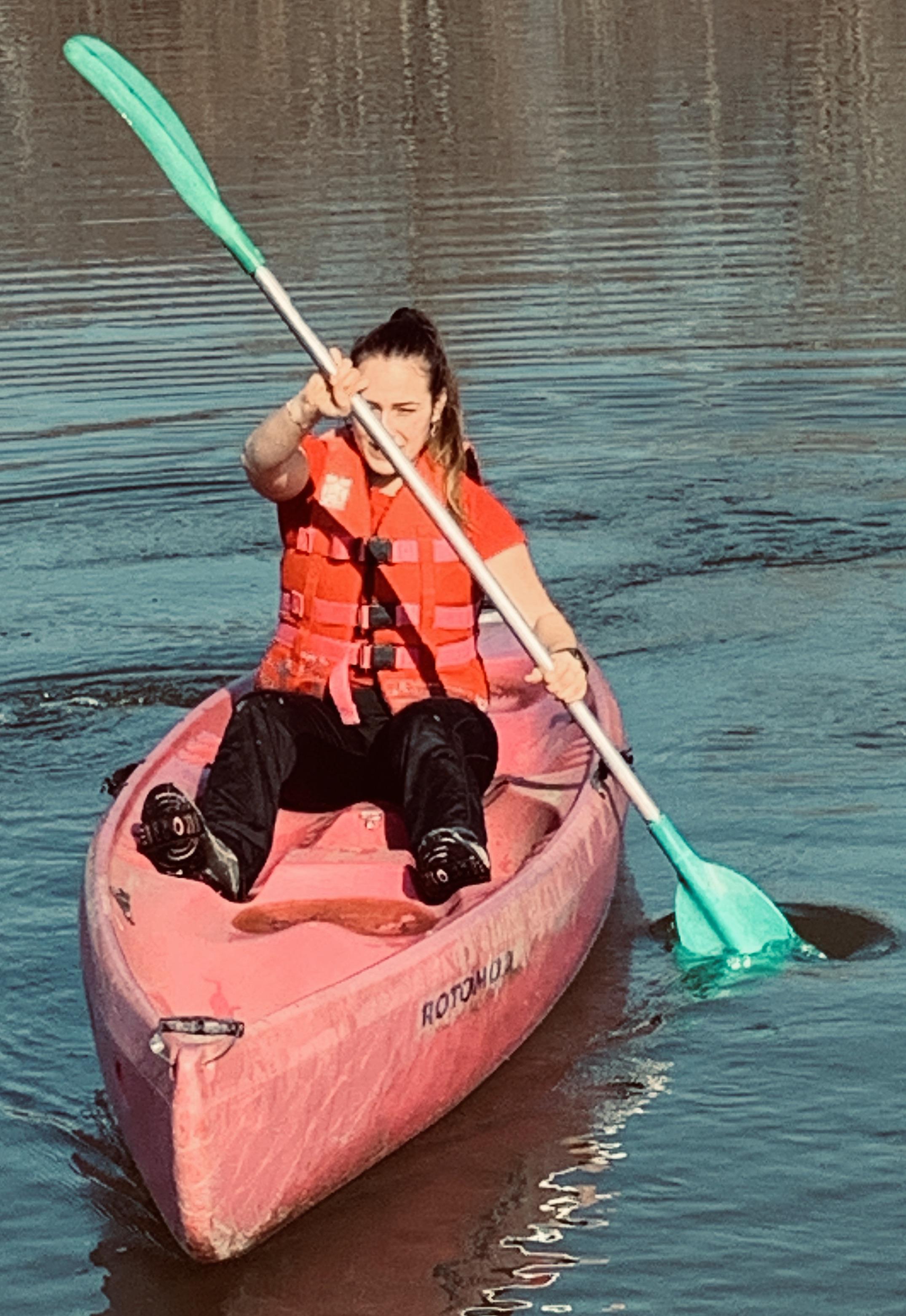
FORWARD TECHNIQUE KAYAK
To go forward in the kayak you use the forward stroke technique. This stroke is done in 4 steps. At the first step you put the paddle in the water as close to the boat as possible. Try to avoid splashing. Your trunk and arms may move slightly forward. At step 2, pull the paddle backwards with your lower arm. With your upper arm, you actively push the other side of the paddle forward. In this way, you create a leverage effect. This leverage effect is important in order to save strength. In step 3, you lift the paddle blade with the narrow side out of the water so that you scoop up as little water as possible. Finally, in step 4, bring the paddle back to the front. In doing so, you make sure that the paddle moves as close to the water as possible.
These 4 phases are a continuous cycle. This cycle is repeated alternately left and right. In the beginning you try to pay attention to each phase. After an hour, this will flow into each other.
CANOE FORWARD TECHNIQUE
To move forward in a canoe, you also use the forward stroke technique. There are, however, a number of things you must pay particular attention to. At step 1, inserting the paddle, it is important to paddle really close to the boat. The closer you paddle to the boat, the less you will deviate from the forward stroke. In step 2, the leverage effect is very important in order to gain more power and to move forward faster. In step 3 and step 4, there are no additional points of interest.
The 4 phases of the forward stroke are also a continuous cycle in canoeing. This cycle is repeated every 5 to 20 strokes to the right and left in order to keep sailing straight ahead. Note that when changing sides, your hands must change places. In the beginning, try to pay attention to each phase. After an hour or so this will flow smoothly into each other.
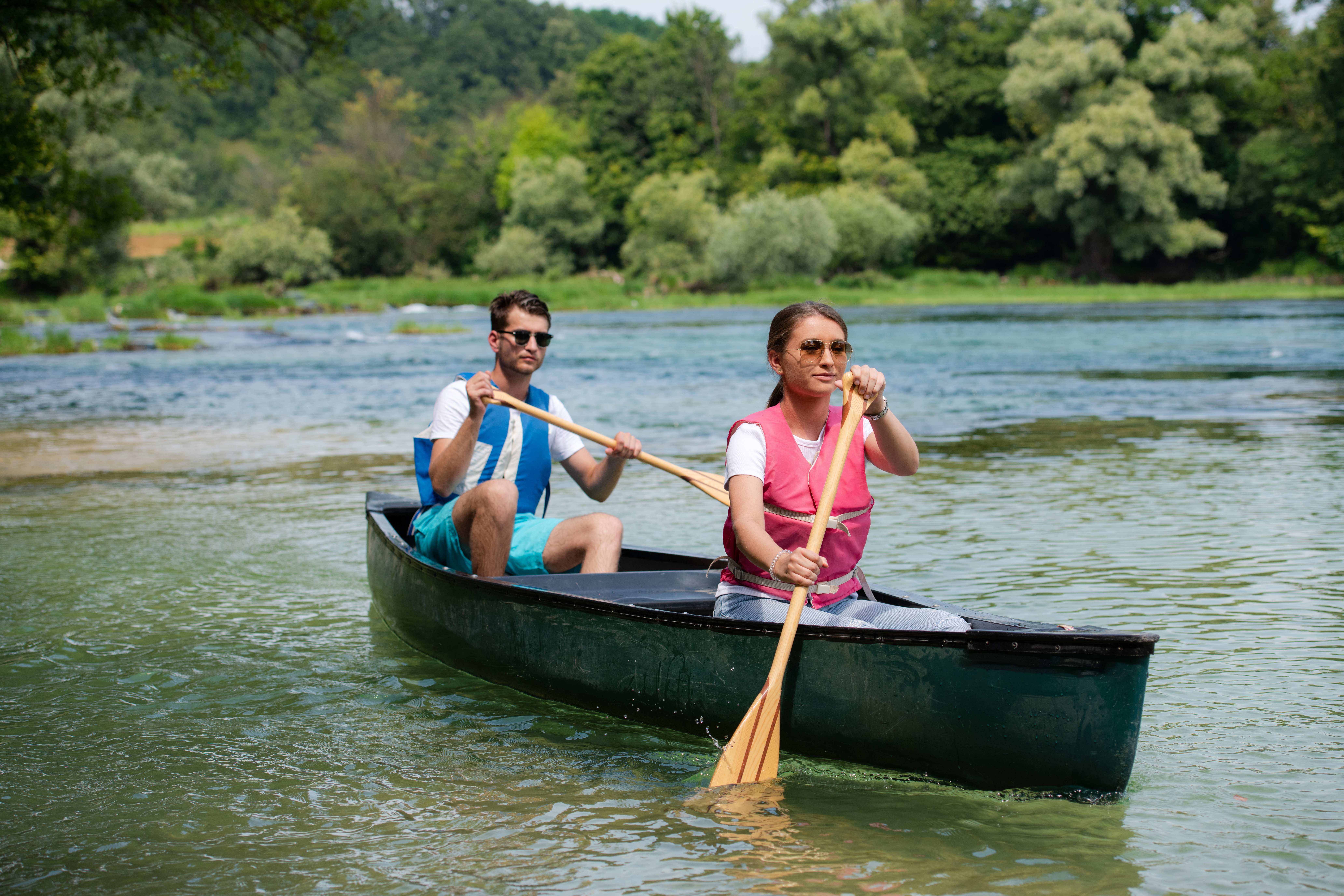
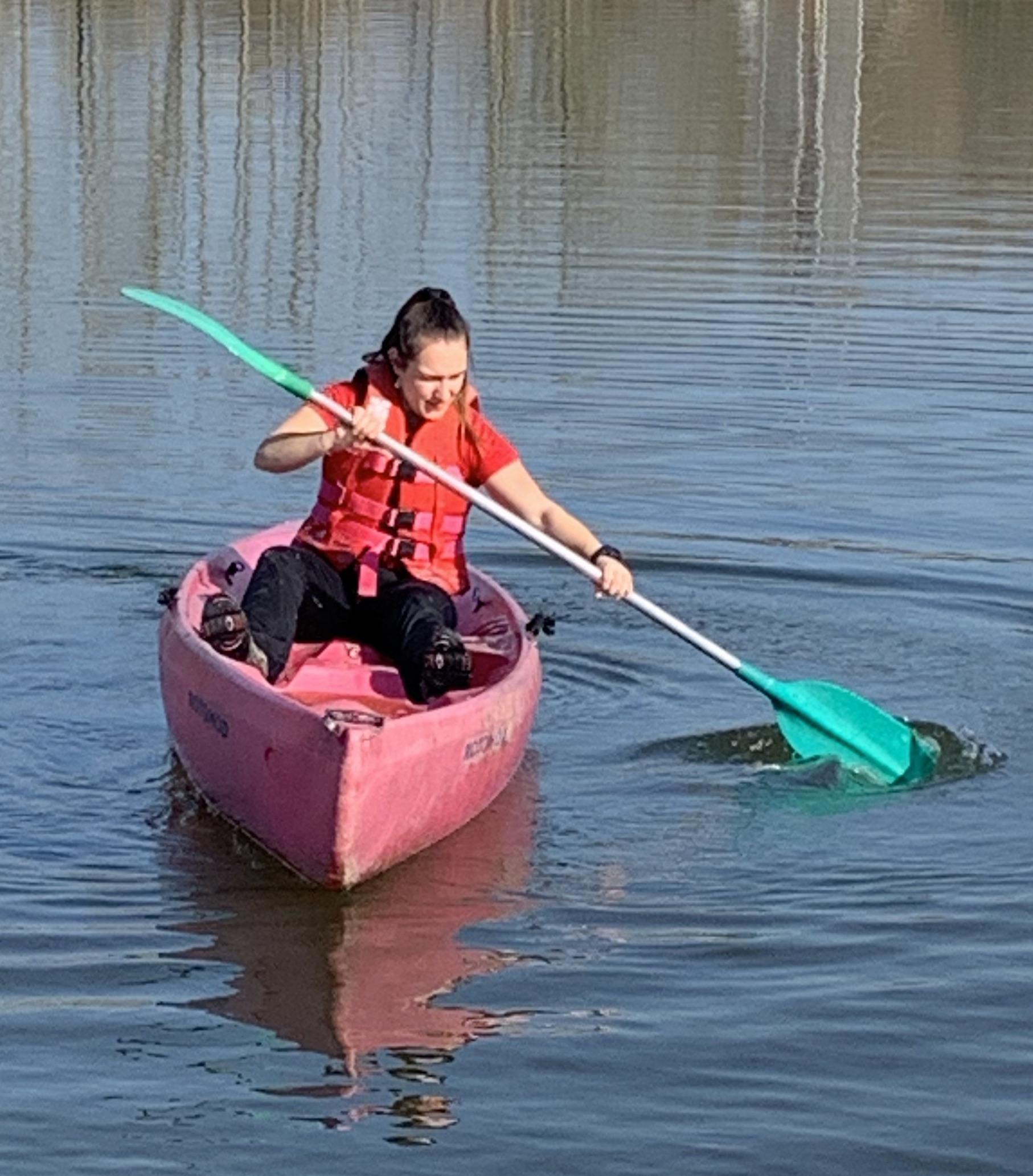
CORRECTIVE STROKES
In addition to sailing forward, it is also useful to be able to change direction. There are 3 possibilities that can be used in kayaking and canoeing. First, you can slowly change direction. To achieve this, you paddle 2 or 3 times along the same side. When you paddle right, you will go left and vice versa. Secondly, you can use a bow stroke to make a large turn. To do this, first bring your body fully forward to stick the paddle as close to the boat and as far into the water as possible. Then you make a wide arc in the water far from the boat (see photo). You only pull on the lower arm, the upper arm has no pushing effect here. Finally, you can counter-steer to change direction. When counter-steering, the paddle is brought into the water from the back to the front. When you paddle right, the boat will go right and vice versa. The disadvantage of this stroke is its great loss of speed.
It is mainly the person at the back who will have to use these corrective strokes to change direction. This person will also have to be responsible for steering the boat. The person in front can continue to use the forward stroke to gain speed.
GETTING WATER OUT OF YOUR BOAT
On the water it can happen that you fall over and your boat fills with water. In a kayak, you pull the boat to the side and tip it over as shown in the picture to let the water out. With the canoe this is a bit more difficult. When the canoe is filled with water, you cannot lift it easily. So it is best to pull your canoe with 2 on the side and lift it inch by inch so that the water can slowly flow out. A small bucket can also be a great help to free the canoe of water. Take plenty of time because it takes a while to get all the water out of the boat.
